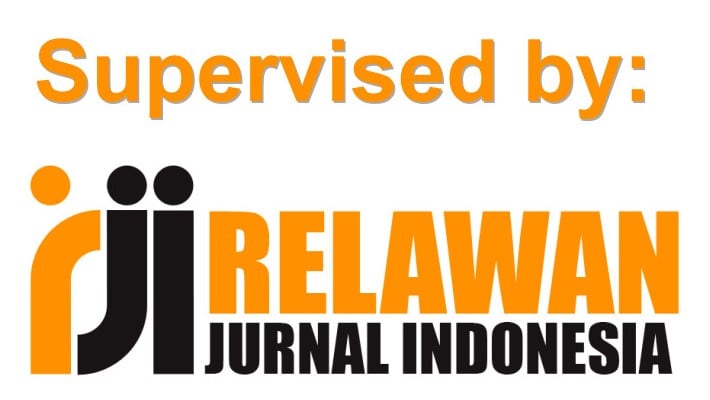MENCARI WARISAN NABI DI INDONESIA DALAM PERSPEKTIF SEJARAH
DOI:
https://doi.org/10.18592/jsi.v3i1.1105Keywords:
prophet Legacy, spiritual link, the companions, sacred auraAbstract
Indonesia is a country with the world’s third largest population; about 90 percent of the population is Muslims. The history of the Islam in this country can be traced back to descendants of the prophet Muhammad. They played an important role in disseminating Islamic teachings in the archipelago. Until now descandants of the prophet still engage in Islamic preaching activities, understanding the legacy of the prophet from historical perspective is instructive, for that will help clarify the making of Muslim civilition in the archipelago. The prophet sent his companions to the area now known as Indonesia. His predecesors continued this tradition of sending companions in preaching missions nost notably in the time Utsman ibn Affan. The Islamic spiritual link with Indonesia was concrete: one preserved clothing of the prophet and a flag used in one of this own battles were given to the Sultan of Banten as gifts. Indeed, the community of Islamic believers shares the legacy of the prophet regardless of their orgins. Most prominently among them have been the Islamic preachers and Muslim warriors.References
Aceh, Abu Bakar. (1971). Sekitar Masuknya Islam ke Indonesia, Semarang: PT. Ramadhani.
al-Raniri, Nuruddin. (1966). Bustan al Salatin, Bab II, Kuala Lumpur: T. Iskandar.
Azra, Azyumardi. (1995) Jaringan Ulama Timur Tengah dan Kepulauan Nusantara Abad XVII dan XVIII, Bandung: Mizan.
_______. (1999). Renaissans Islam Asia Tenggara, Sejarah Wacana dan Kekuasaan, Bandung: Remaja Rosada.
bin Syihab, Sayyid Muhammad bin Abd. Rahman. Hadirul Alamil Islam, jilid III, Cet. II.
Dhuha, Syamsu. (t.th.) Penyebaran dan Perkembangan Islam, Katholik, dan Kristen Protestan di Indonesia, Surabaya.
Gani, Ruslan Abdul. (1983). Sejarah Perkembangan Islam di Indonesia, Jakarta: Pustaka Antar Kota.
Hamka. (1973). Sejarah Umat Isalm, Jilid IV, Jakarta: Bulan Bintang.
Hurgronje, Snouck Ensyclopidie Van Den Indie.
Khalid, Husain. (1966). Taj al Salton, Dewan Bahasa dan Pustaka: Kuala Lumpur.
Lembaga Al-Qur’an dan Hadits Majelis Tinggi Urusan Agama Islam Kekementerian Waqaf Mesir, (1982). Kelengkapan Hadis Qudsy, alih bahasa M. Zuchri, Semarang: Toha Putra.
Lembaga Penelitian dan Studi DGI. (1979) Jerih dan Juang, Jakarta: LPSDGI.
Musthafa, Bisyri. (1952). Aulia, Kudus: Menara Kudus.
Shariati, Ali. (1983). Wa Adzimu fi nafsi bi al Hajj, terj. Anas Mahyudin, Bandung: Pustaka.
Suryanegara, Ahmad Mansur. (1996). Menemukan Sejarah Wacana Pergerakan Islam di Indonesia, Bandung: Mizan.
Syalabi, A. (1973). Sejarah dan Kebudayaan Islam, terj. Muchtar Yahya. Jayamurni.
Tiam Pembinaan Penataran dan Bahan Penataran Pegawai RI, Undang-Undang Dasar, Pedoman Penghayatan dan Pengamalan Pancasila, Garis-garis Besar Haluan Negara.
Wahyudi, Asnan dan Abu Khalid. (t.th.). Kisah Wali Sanga, Para Penyebar Islam di Tanah Jawa, Surabaya: Karya Ilmu.
Zuhri, Saifuddin. (1976). Sejarah Kebangkitan Islam dan Perkembangannya di Indonesia, Bandung: PT. al-Ma’arif.
Downloads
Published
How to Cite
Issue
Section
License
Authors who publish with this journal agree to the following terms:
- Authors retain copyright and grant the journal right of first publication with the work simultaneously licensed under a Creative Commons Attribution License that allows others to share the work with an acknowledgment of the work's authorship and initial publication in this journal.
- Authors can enter into separate, additional contractual arrangements for the non-exclusive distribution of the journal's published version of the work (e.g., post it to an institutional repository or edit it in a book), with an acknowledgment of its initial publication in this journal.
- Authors are permitted and encouraged to post their work online (e.g., in institutional repositories or on their website) before and during the submission process, as it can lead to productive exchanges, as well as earlier and greater citation of published work (See The Effect of Open Access).





















